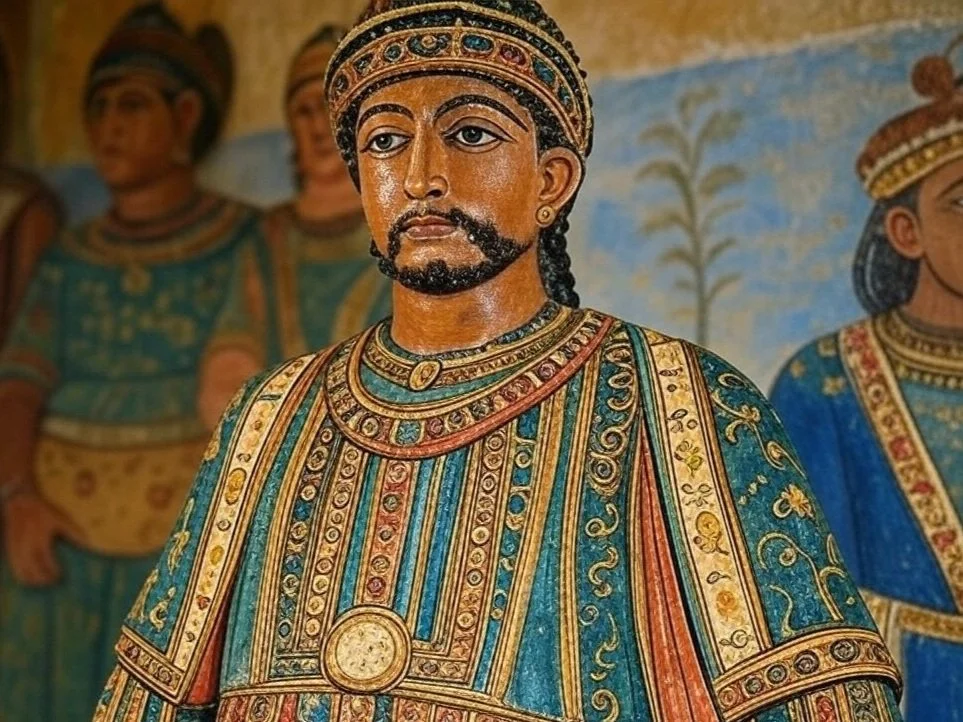The Etruscan civilization, which flourished in central Italy between the 8th and 3rd centuries BCE, is often overshadowed by the grandeur of Rome. Yet, the Etruscans were a sophisticated and influential people whose culture, art, and innovations profoundly shaped the development of ancient Italy. From their vibrant cities to their enigmatic language, the Etruscans left an indelible mark on history, particularly on the Roman civilization that would eventually dominate the Mediterranean.
The Rise of the Etruscans
The Etruscans, known to themselves as Rasna and to the Greeks as Tyrrhenoi, inhabited the region of Etruria, roughly corresponding to modern-day Tuscany, western Umbria, and northern Lazio. Their civilization emerged around the 8th century BCE, during the Iron Age, and reached its zenith between the 7th and 6th centuries BCE. The Etruscans were skilled traders, sailors, and metalworkers, and their wealth and influence extended across the Mediterranean, from Greece to North Africa.
Contributions to Roman Culture
The Etruscans played a pivotal role in shaping early Roman culture, politics, and religion. Before Rome became a republic, it was ruled by Etruscan kings, such as the legendary Tarquin dynasty. The Etruscans introduced several key elements to Roman society, including:
Urban Planning and Architecture: The Etruscans were master builders, and their techniques influenced Roman architecture. They introduced the use of the arch, vault, and paved roads, which became hallmarks of Roman engineering. The layout of Roman cities, with their grid-like streets and central forums, also owes much to Etruscan urban planning.
Religion and Rituals: Many Roman religious practices, such as augury (divination by observing birds) and the use of temples, were borrowed from the Etruscans. The Romans also adopted Etruscan deities, such as Tinia (equivalent to Jupiter) and Uni (equivalent to Juno).
Art and Symbolism: Etruscan art, with its vibrant colors and dynamic forms, influenced Roman artistic traditions. The Romans admired Etruscan bronze work, pottery, and tomb paintings, which often depicted scenes of daily life, mythology, and the afterlife.
Key Archaeological Sites
The legacy of the Etruscans is best preserved in their archaeological sites, which offer a glimpse into their rich culture and daily life. Two of the most significant sites are Tarquinia and Cerveteri:
Tarquinia: Located in northern Lazio, Tarquinia is renowned for its extensive necropolis, which contains thousands of tombs, many adorned with vivid frescoes. These paintings depict banquets, dances, and mythological scenes, providing valuable insights into Etruscan beliefs and customs. The Tomb of the Leopards and the Tomb of the Triclinium are among the most famous.
Cerveteri: This ancient city, known to the Etruscans as Caere, is home to the Banditaccia Necropolis, a UNESCO World Heritage Site. The tombs here are carved into tufa rock and resemble houses, complete with doors, windows, and furniture. The Tomb of the Reliefs is particularly notable for its detailed stucco decorations, which include tools, weapons, and household items.
Etruscan Art, Religion, and Language
Art: Etruscan art is characterized by its vitality and expressiveness. Sculptures, such as the Apollo of Veii and the Capitoline Wolf, showcase their skill in bronze and terracotta. Tomb paintings, often depicting lively banquets and athletic competitions, reflect the Etruscans' love of life and their belief in an active afterlife.
Religion: The Etruscans were deeply religious, with a complex pantheon of gods and a strong emphasis on divination and rituals. They believed in interpreting the will of the gods through natural phenomena, such as lightning and the flight of birds. Their religious practices were highly organized, with priests known as haruspices playing a central role in public and private life.
Language: The Etruscan language remains one of the great mysteries of antiquity. Written in a script derived from the Greek alphabet, it has yet to be fully deciphered. While thousands of inscriptions have been found, most are short and repetitive, making it difficult to reconstruct the language's grammar and vocabulary. The lack of a bilingual text, akin to the Rosetta Stone, has further complicated efforts to understand Etruscan fully.
The Decline of the Etruscans
By the 3rd century BCE, the Etruscan civilization began to decline, succumbing to the expanding power of Rome and the invasions of Celtic tribes. Despite their eventual assimilation into Roman society, the Etruscans' cultural legacy endured, influencing Roman art, architecture, and religion.
Conclusion
The Etruscans were a remarkable civilization whose contributions to ancient Italy and Rome cannot be overstated. Through their art, religion, and innovations, they laid the groundwork for much of what we associate with Roman culture. Archaeological sites like Tarquinia and Cerveteri continue to reveal the richness of Etruscan life, offering a window into a civilization that, though often forgotten, played a crucial role in shaping the ancient world. The Etruscans remind us that history is not just the story of the victors but also of the vibrant cultures that paved the way for their rise.







